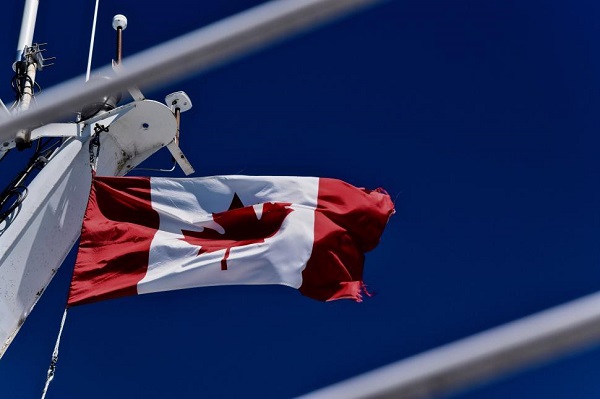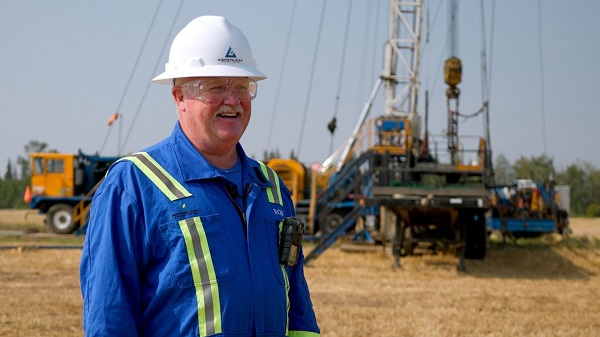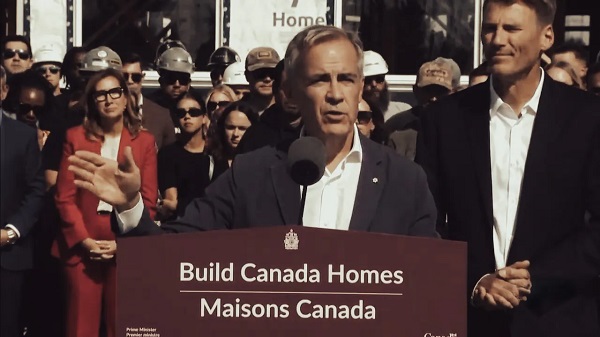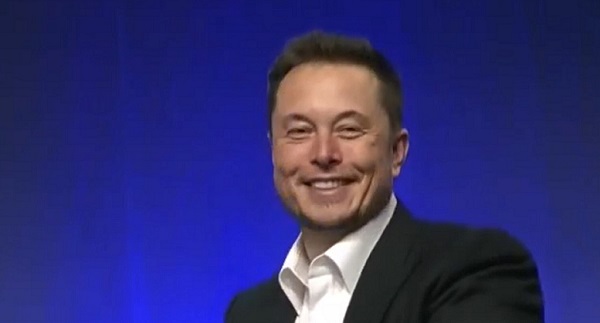Energy
If Canada won’t build new pipelines now, will it ever?

Canada must not allow ideological dogma and indecision to squander a rare chance to lock in our energy sovereignty for good
Canada teeters on the edge, battered by a trade war and Trump’s tariff threats from its once-steady southern ally, yet held back by its own indecision. Trump’s 25 percent tariffs have exposed a brutal truth: Canada’s economy, especially its oil exports, is nearly 100 percent dependent on the U.S.
Voices are crying out to lament the regulatory chaos, ideological zeal, and whispers of “peak oil” that stall progress. If Canada won’t build pipelines when its sovereignty and prosperity are at stake, will it ever? The economics are clear, peak oil is a myth, and the only barriers are self-imposed: dogma, tangled rules, and bad thinking.
The infrastructure Canada can command is immense. Four million barrels of crude flow to the U.S. daily, and Trump’s threats have made that number look even bigger.
The Trans Mountain Expansion (TMX) is proof—linking Alberta to Asia’s markets, with royalties already filling public coffers.
But it’s a lone success. Energy East and Northern Gateway are buried, killed by delays and poor decisions. Private capital is gun-shy, scarred by TMX’s $34 billion price tag, ballooned by a broken system. Why risk billions when the path is a minefield?
The stakes are higher than ever. Forget the claim that oil demand peaks this year at 102 million barrels daily. Experts see a different horizon: Goldman Sachs predicts growth to 2034, OPEC to 2050, BP to 2035—some forecasts topping 80 million barrels.
Enbridge’s Greg Ebel sees “well north” of 100 million by mid-century, driven by Asia’s demand and the developing world’s hunger for energy. Peak oil is a ghost story, not a reality. Canada sits on the third-largest reserves in the world and could dominate the global market, not just feed one neighbour. Pipelines to every coast—east, west, and north—would unlock that future and secure riches for decades.
So what’s holding us back? Ideology, for starters.
Environmental lobbying and influence wrap resource projects in suffocating red tape—emissions caps and endless assessments that kill progress. Years of environmental studies and “net zero” hurdles that no pipeline can clear are choking off bold ideas.
Quebec’s stance has softened under Trump’s pressure, but problematic ideals still linger that blind leaders to reality. The regulatory mess makes it worse.
Today’s system demands a $1 billion bet upfront—engineering, consultations—before a shovel hits the dirt. Companies like TC Energy have been burned before, and others won’t play unless there’s reform. TMX worked because it was a government rescue, but its cost is a deterrent to others.
Then there’s the mess of bad ideas. Government officials will talk about pipelines one day and then express doubts about them the next, leaving a void of leadership. Former prime minister Jean Chrétien very strongly backed a West-East pipeline at the Liberal Party leadership convention.
New leader Mark Carney supports energy links but will not name pipelines, even though public support for them has surged. Four out of five Canadians back coast-to-coast pipelines—but leaders continue to waver.
If not now—when we’re in a trade war and facing annexation—when? Canada’s future is about the infrastructure it controls, not the excuses it clings to. The wealth is waiting, the demand is there, and the barriers are ours to break. Ditch the dogma, fix the rules, and build. Or remain a nation forever poised to rise but never brave enough to do it.
Alberta
Alberta’s number of inactive wells trending downward

Aspenleaf Energy vice-president of wells Ron Weber at a clean-up site near Edmonton.
From the Canadian Energy Centre
Aspenleaf Energy brings new life to historic Alberta oil field while cleaning up the past
In Alberta’s oil patch, some companies are going beyond their obligations to clean up inactive wells.
Aspenleaf Energy operates in the historic Leduc oil field, where drilling and production peaked in the 1950s.
In the last seven years, the privately-held company has spent more than $40 million on abandonment and reclamation, which it reports is significantly more than the minimum required by the Alberta Energy Regulator (AER).
CEO Bryan Gould sees reclaiming the legacy assets as like paying down a debt.
“To me, it’s not a giant bill for us to pay to accelerate the closure and it builds our reputation with the community, which then paves the way for investment and community support for the things we need to do,” he said.
“It just makes business sense to us.”
Aspenleaf, which says it has decommissioned two-thirds of its inactive wells in the Leduc area, isn’t alone in going beyond the requirements.
Producers in Alberta exceeded the AER’s minimum closure spend in both years of available data since the program was introduced in 2022.
That year, the industry-wide closure spend requirement was set at $422 million, but producers spent more than $696 million, according to the AER.
In 2023, companies spent nearly $770 million against a requirement of $700 million.
Alberta’s number of inactive wells is trending downward. The AER’s most recent report shows about 76,000 inactive wells in the province, down from roughly 92,000 in 2021.
In the Leduc field, new development techniques will make future cleanup easier and less costly, Gould said.
That’s because horizontal drilling allows several wells, each up to seven kilometres long, to originate from the same surface site.
“Historically, Leduc would have been developed with many, many sites with single vertical wells,” Gould said.
“This is why the remediation going back is so cumbersome. If you looked at it today, all that would have been centralized in one pad.
“Going forward, the environmental footprint is dramatically reduced compared to what it was.”

During and immediately after a well abandonment for Aspenleaf Energy near Edmonton. Photos for the Canadian Energy Centre
Gould said horizontal drilling and hydraulic fracturing give the field better economics, extending the life of a mature asset.
“We can drill more wells, we can recover more oil and we can pay higher royalties and higher taxes to the province,” he said.
Aspenleaf has also drilled about 3,700 test holes to assess how much soil needs cleanup. The company plans a pilot project to demonstrate a method that would reduce the amount of digging and landfilling of old underground materials while ensuring the land is productive and viable for use.

Crew at work on a well abandonment for Aspenleaf Energy near Edmonton. Photo for the Canadian Energy Centre
“We did a lot of sampling, and for the most part what we can show is what was buried in the ground by previous operators historically has not moved anywhere over 70 years and has had no impact to waterways and topography with lush forestry and productive agriculture thriving directly above and adjacent to those sampled areas,” he said.
At current rates of about 15,000 barrels per day, Aspenleaf sees a long runway of future production for the next decade or longer.
Revitalizing the historic field while cleaning up legacy assets is key to the company’s strategy.
“We believe we can extract more of the resource, which belongs to the people of Alberta,” Gould said.
“We make money for our investors, and the people of the province are much further ahead.”
Energy
Canada Cannot Become an Energy Superpower With its Regulatory Impediments

From Energy Now
By Yogi Schulz
Prime Minister Carney wants Canada to become an energy superpower. It’s a worthy goal because Canada has rich, undeveloped energy resources. Many Canadians happily endorse his goal because it achieves these benefits:
- Economic growth and prosperity for Canadians.
- Reduce the adverse consequences of American tariffs.
- Additional tax revenue that reduces the mountain of Canadian public debt.
- Improved energy security and reduced cost for Canadians in Eastern Canada.
- Improved energy security for Canada’s international energy customers.
- Alternative energy supply options for NATO allies to replace Russian energy.
- Greenhouse gas (GHG) reductions that occur when Canadian high ESG energy replaces other energy sources.
However, Canada can achieve these benefits only by overcoming multiple regulatory impediments, including those described below.
Interprovincial trade barriers
Interprovincial trade barriers impose costs on all industries. Consumers, not companies, bear these costs. A Macdonald-Laurier Institute study estimated that eliminating interprovincial trade barriers could boost Canada’s economy by between 4.4 and 7.9 percent over the long term or between $110 and $200 billion per year. Examples of interprovincial trade barriers that affect the oil and gas industry include:
- Pools that cross provincial boundaries: Producers must build two higher-cost processing facilities, one on each side of the border.
- Gathering systems that cross provincial boundaries: Producers must obtain a federal pipeline permit, which requires a multi-year approval process, to build a pipeline that crosses a provincial border.
- Many minor technical differences: Provinces set their own rules, standards, and certifications for topics such as vehicle weight, length, and safety protocols. These differences increase producer operating costs.
- Professional licensing: Individuals, such as those in skilled trades, must undergo a lengthy, costly process to obtain a license to work in another province, even if they are already certified elsewhere.
- Administrative hurdles: Producers operating in multiple provinces face a complex web of permit, license, and reporting requirements that vary from one province to the next.
- Geographical barriers: The dimensional limitations of tunnels in the Rocky Mountains create a shipping barrier for producers, adding costs when importing large facility components.
For Canada to achieve energy superpower status, reducing interprovincial trade barriers will be necessary to enhance its competitiveness. The Canadian Free Trade Agreement (CFTA) and the Free Trade and Labour Mobility in Canada Act are encouraging federal initiatives to reduce interprovincial trade barriers. The outrageous Trump tariffs have also provided some provinces with a new incentive to lower or eliminate some of their barriers. However, the “mutual recognition” approach may be more symbolic than substantive.
Provincial regulatory incompatibilities
Oil and natural gas producers face slightly different regulations in every province and territory. These incompatibilities incur avoidable operational costs and erode Canada’s competitiveness in the global investment capital market.
Energy industry regulators operate in every province and territory where oil and natural gas are produced. These regulators have independently produced large volumes of regulations that are similar but far from identical. Most of these regulations are derived from those first written in Alberta and various US jurisdictions. Alberta created the first Canadian energy industry regulator because most of the resources are located within its borders.
So far, energy industry regulators have only harmonized the following:
- Canadian Standards Association (CSA) Z662 Oil and Gas Pipeline Systems. British Columbia, Alberta and Saskatchewan have adopted this standard.
- Directive 017 – Measurement Requirements for Oil and Gas Operations. Alberta and Saskatchewan have adopted this directive.
Unfortunately, only these two documents, among many dozens, have been harmonized. Parochial thinking appears to be a significant impediment to more harmonization. For example:
- Some Canadian regulators participate in the Western Regulators Forum (WRF). However, the WRF has yet to harmonize any regulations.
- Over two decades ago, the Alberta Department of Energy and Minerals sponsored the development of Petrinex with a vision of energy industry-government data management cooperation across multiple provinces. However, the vision has not been realized because the provinces built individual, incompatible systems to protect their turf.
“Producers write more government submissions than technical papers – ten times more. Submissions consume significant effort from technical professionals and include specific oil and gas technical information such as fracking schemes, SAGD operations or facility modifications,” says Granger Low, of Regaware Systems Ltd. “When producers can easily search previous submissions using the artificial intelligence of AppIntel AI, they take advantage of Alberta’s uniquely remarkable oil and gas technical advances, and avoid the delays related to over-regulation and resubmission.”
For Canada to achieve energy superpower status, harmonizing more provincial and territorial oil and natural gas industry regulations will be required to improve its competitiveness.
Provincial regulatory issues
Dealing with regulations is a cost that all oil and natural gas producers bear. Regulations are desirable and necessary to a point. Issues where the energy industry regulators could improve performance include:
- Reducing and simplifying the enormous number of directives. The issue is that the directives contain extensive related best practices that, while valuable, become indistinguishable from regulatory requirements.
- Reducing and simplifying the permit application processes for wells, facilities and pipelines. How the current complexity helps regulators fulfill their mandate is unclear.
- Simplifying reporting and compliance assessment would reduce administrative costs for both producers and regulators.
- Eliminating the APMC in Alberta would reduce producers’ administrative costs and increase Crown royalty revenue. This article describes the details: It’s Time to Retire the APMC – The APMC Mandate Has Expired, Its Cost is Now Avoidable.
- Failing to address data quality issues for wells, digital well logs, and cores undermines one of Alberta’s competitive advantages.
For Canada to achieve energy superpower status, reducing the cost of regulatory applications and compliance is a component of improving its competitiveness.
Taxation disparities
Oil and natural gas producers encounter taxation disparities across provinces. The following disparities affect geographic investment decisions:
- Crown Royalty and Freehold Production Tax calculations and related settlement processes vary considerably by province and type of production.
- Corporate income tax rates and reporting vary by province.
- The combined GST and PST/HST rate varies from 5% in Alberta to 15% in some other provinces.
- Oil and natural gas facility property tax rates and reporting vary by province.
Simplifying these taxation disparities would reduce administrative costs for both producers and the Crown. The combination of taxes and fees that producers pay in Canada is enough to cause some to invest in more profitable jurisdictions.
For Canada to achieve energy superpower status, reducing and harmonizing taxation disparities is a prerequisite to encourage more investment in production.
Additional costs that every producer accepts
Overcoming impediments is particularly important to Canadian competitiveness because the Canadian oil and gas industry incurs higher operating costs than the industry does in most other jurisdictions. The higher cost categories include:
- Wages and benefits.
- Health, safety and environmental standards.
- Abandonment standards.
- Disclosure of intellectual property in publicly-accessible permit application documents.
- Lower staff productivity and added heating costs due to lower winter temperatures.
No one is suggesting lowering these Canadian standards and expectations. However, the associated costs increase the urgency of reducing other regulatory impediments to maintain Canada’s competitiveness.
Conclusions
Canada has the resources to become an energy superpower and realize the immense economic, strategic, and environmental benefits that are available. Policymakers can contribute by harmonizing regulations and removing interprovincial trade barriers to ensure investment in Canadian energy is competitive on world financial markets.
Yogi Schulz has over 40 years of experience in information technology in various industries. He writes for Engineering.com, EnergyNow.ca, EnergyNow.com and other trade publications. Yogi works extensively in the petroleum industry to select and implement financial, production revenue accounting, land & contracts, and geotechnical systems. He manages projects that arise from changes in business requirements, the need to leverage technology opportunities, and mergers. His specialties include IT strategy, web strategy, and systems project management.
-

 Business2 days ago
Business2 days agoCarney budget doubles down on Trudeau-era policies
-

 COVID-192 days ago
COVID-192 days agoCrown still working to put Lich and Barber in jail
-

 Business1 day ago
Business1 day agoCarney’s Deficit Numbers Deserve Scrutiny After Trudeau’s Forecasting Failures
-

 Business2 days ago
Business2 days agoCarney budget continues misguided ‘Build Canada Homes’ approach
-

 International1 day ago
International1 day agoKazakhstan joins Abraham Accords, Trump says more nations lining up for peace
-

 armed forces22 hours ago
armed forces22 hours agoIt’s time for Canada to remember, the heroes of Kapyong
-

 Automotive1 day ago
Automotive1 day agoElon Musk Poised To Become World’s First Trillionaire After Shareholder Vote
-

 Energy1 day ago
Energy1 day agoCanada Cannot Become an Energy Superpower With its Regulatory Impediments









